Europe was a very different place in the Middle Ages, between the sixth and 15th centuries, from the collapse of the Roman Empire to the dawn of the Renaissance.
Many regard this as the Dark Ages—a time in Europe of famine, plague and constant war. Yet medieval Europe was also a time of scientific and artistic awakening. Magnificent castles and cathedrals were built. Trade began to expand. Crusades, new trade routes, and the dawn of the great age of exploration broadened knowledge.
Luckily for visitors today, many of Europe’s medieval treasures remain remarkably intact. The vast majority are now carefully protected. Uncovering these exquisite towns and cities, their art and their museums is a chance to peel back layers and layers of history and immerse yourself in a different age.
Here are nine of the most beautiful medieval cities in Europe to visit.
Bruges, Belgium
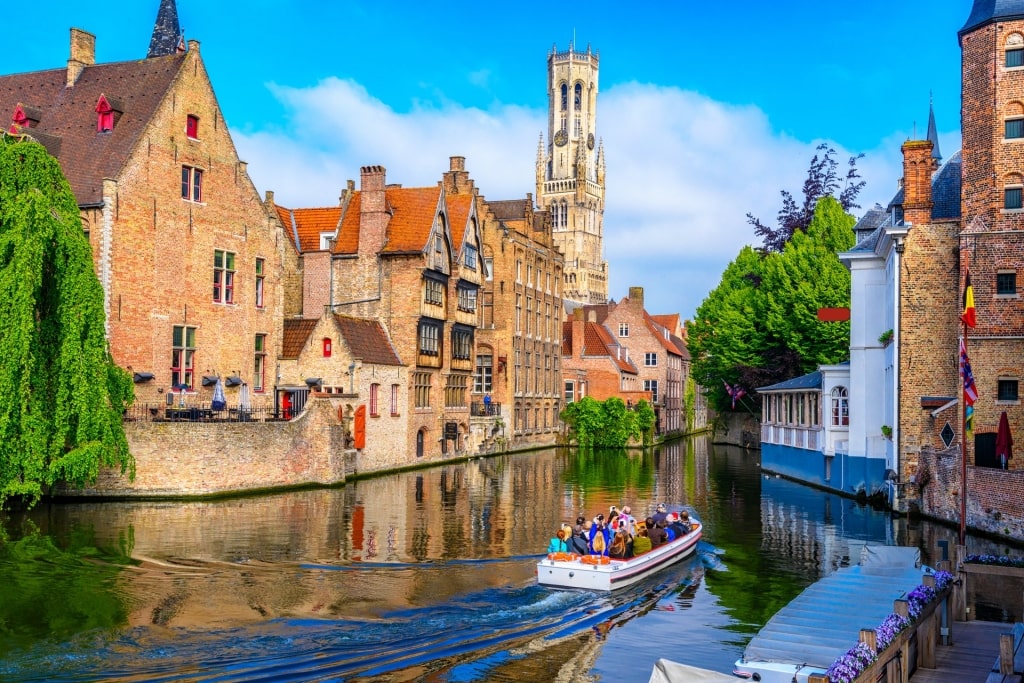
Bruges, Belgium
Bruges enjoyed its heyday as a sophisticated trading center between the 12th and 15th centuries, falling into decline by the early 19th century. Its subsequent revival as one of the best-preserved medieval towns in Europe has been dramatic.
The medieval heart of dreamy Bruges is easy to explore. Cobbled lanes lined with centuries-old, whitewashed houses lead to flower-filled squares, while a web of tranquil canals, for which Bruges is very well known, crisscrosses the city. A cruise on one of these is a wonderful way to take it all in.
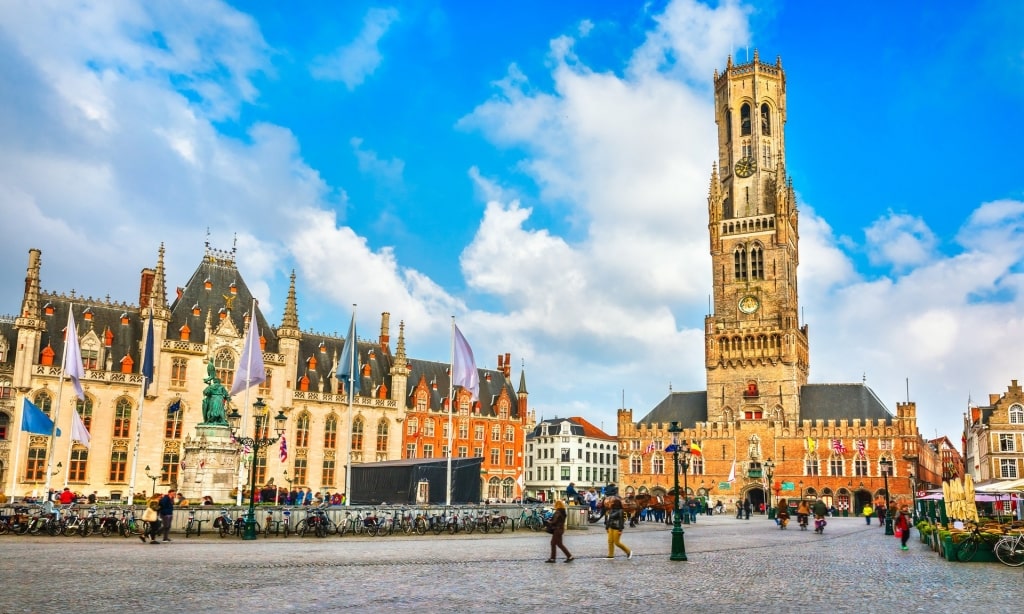
Markt Square in Bruges, Belgium
But don’t miss the 15th-century Belfort, or Belfry, Bruges’ distinctive bell tower. It’s 366 steps to the top, but the views are worth the effort. The tower overlooks the Markt square, which has held a produce market since the 10th century.
Today, the square is lined with colorful, gabled houses, many of them the former homes of the city’s guilds. They’re now converted into restaurants where you can tuck into moules et frites—mussels and fries.
For a gorier immersion in medieval history, visit the Torture Museum on Wollestraat. Fittingly, it’s housed in the cellar of a medieval prison. It’s fascinating, but not for sensitive souls.
Bologna, Italy
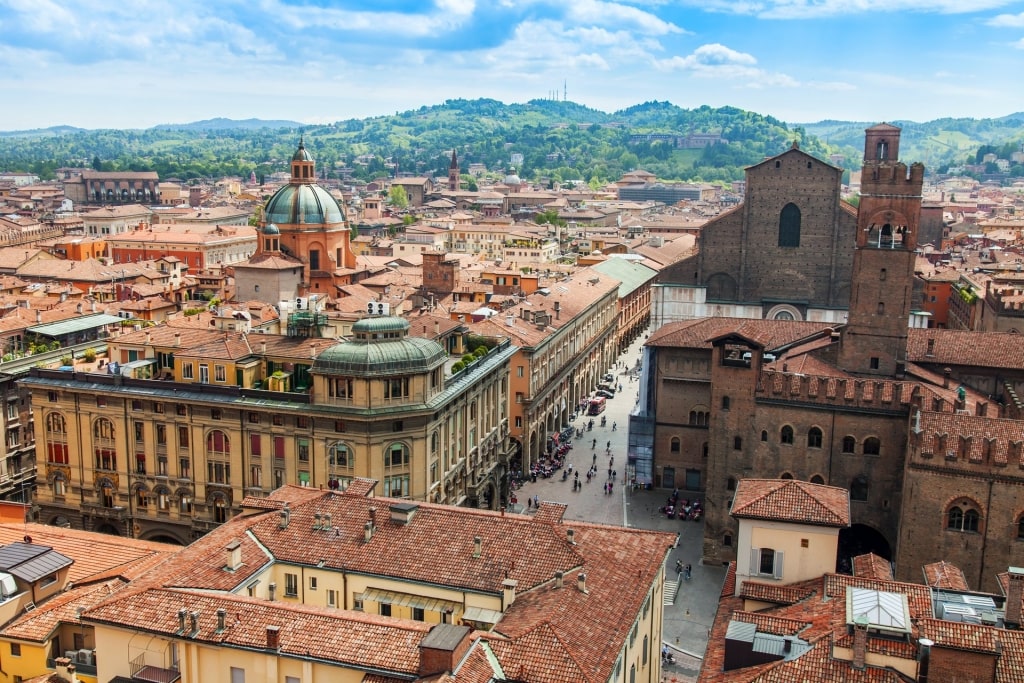
Bologna, Italy
Bologna has many nicknames, from La Grassa (“the fat one”, inspired by the city’s rich food culture) to La Dotta, meaning “the educated one”, related to the fact that the university here was founded in 1088. But perhaps the name that best reflects the city’s medieval history is La Rossa, or “the red one”, which refers to the ubiquitous terracotta brickwork throughout the ancient center.
Here, you’ll find an enchanting tangle of narrow alleys opening onto grand, cobbled squares. The Basilica di San Petronio, on Piazza Maggiore, is one of the most impressive churches, not least because work on it began in the late 14th century and it’s still not finished today. Look at the two-tone façade and you’ll quickly see that it’s asymmetrical.
The Piazza Maggiore itself is little changed since its construction in the 15th century. Lined by palatial, porticoed buildings, this impressive square is always busy with buskers and entertainers.
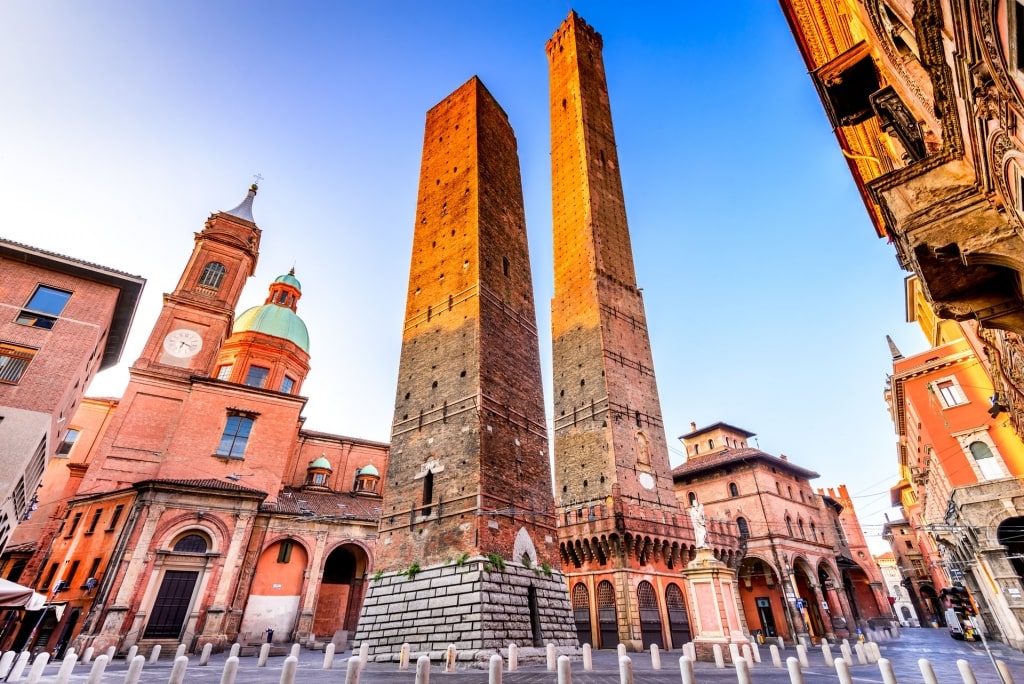
Torre degli Asinelli in Bologna, Italy
Even more iconic are Bologna’s two red-brick towers, the Torre degli Asinelli, built by the Asinelli family in the decade between 1109 and 1119. Today, the towers are alarmingly off-kilter, the taller of the two, at 318 feet high, the tallest medieval leaning tower in the world, tilting some seven feet to one side. With a head for heights, and a degree of stamina, you can still climb up the 498 steps to the top.
San Gimignano, Italy
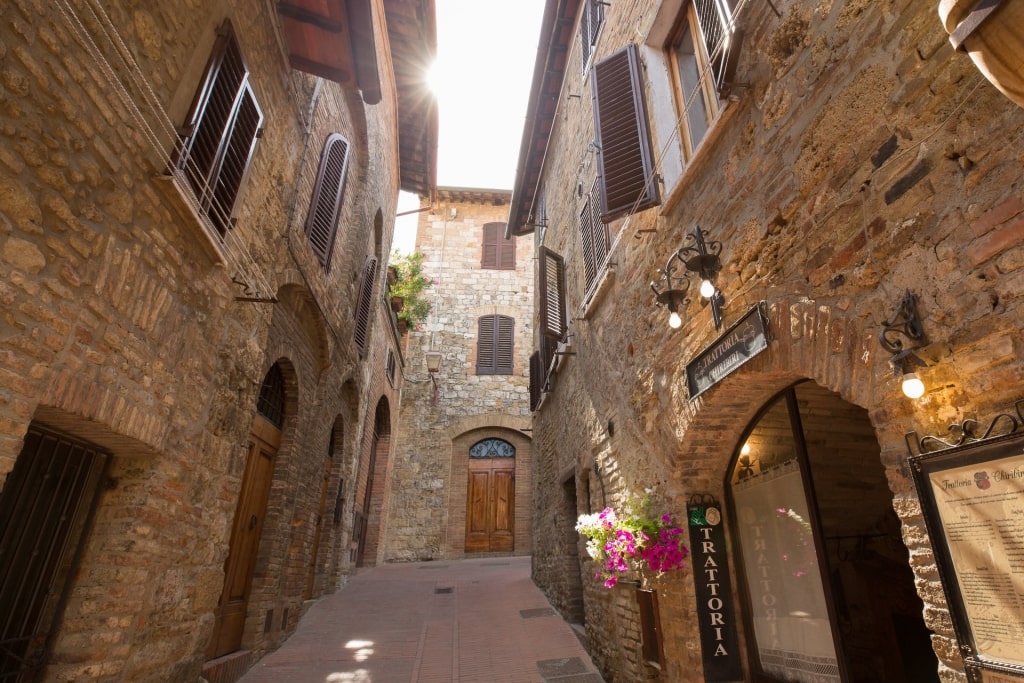
San Gimignano, Italy
Basking in the rolling vineyards of Tuscany, San Gimignano, one of the finest medieval towns in Europe, is a startling sight. As you approach, you’ll see 14 towers piercing the skyline like early skyscrapers. The towers were built around the 12th and 13th centuries, and originally there were 72 of them. Why? Because having a tower taller than that of your neighbor was a status symbol.
While you’re wandering around the ancient streets of this hidden Italian gem, visit the inside of the Collegiata, the cathedral. The frescoes here date back to the 13th century and are absolutely dazzling, depicting scenes from the Old and New Testaments.
Mdina, Malta
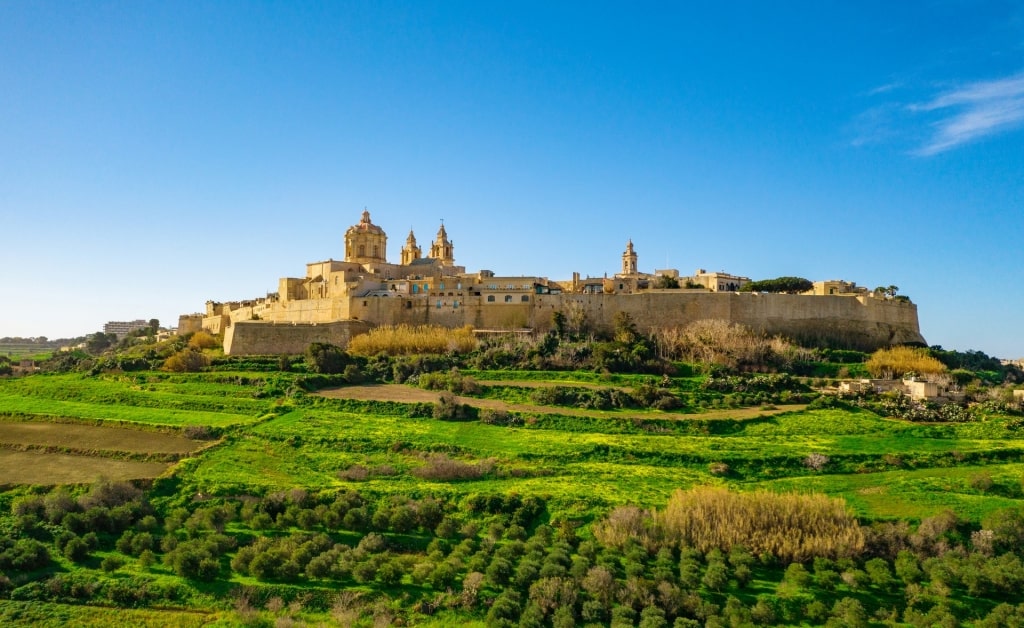
Mdina, Malta
Honey-colored Mdina is known as the “Silent City” thanks to the peace and quiet of its narrow alleys and the lack of cars. The aristocratic town, once the capital of Malta, perches on a hilltop encircled by protective ramparts.
The cluster of buildings inside range from medieval to Baroque, although Mdina was founded by the Romans much earlier. Inside the walls is an architectural treasure trove of monasteries, churches, cathedrals, and grand old mansions.
Many of these mansions were built by wealthy families in the Middle Ages and remain almost unchanged. One of the most beautiful is Palazzo Falson, home of the late philanthropist Olaf Gollchar. A tour reveals the palace’s chapel, kitchens, library and serene courtyard.
Read: 15 Best Beaches in Malta
Obidos, Portugal
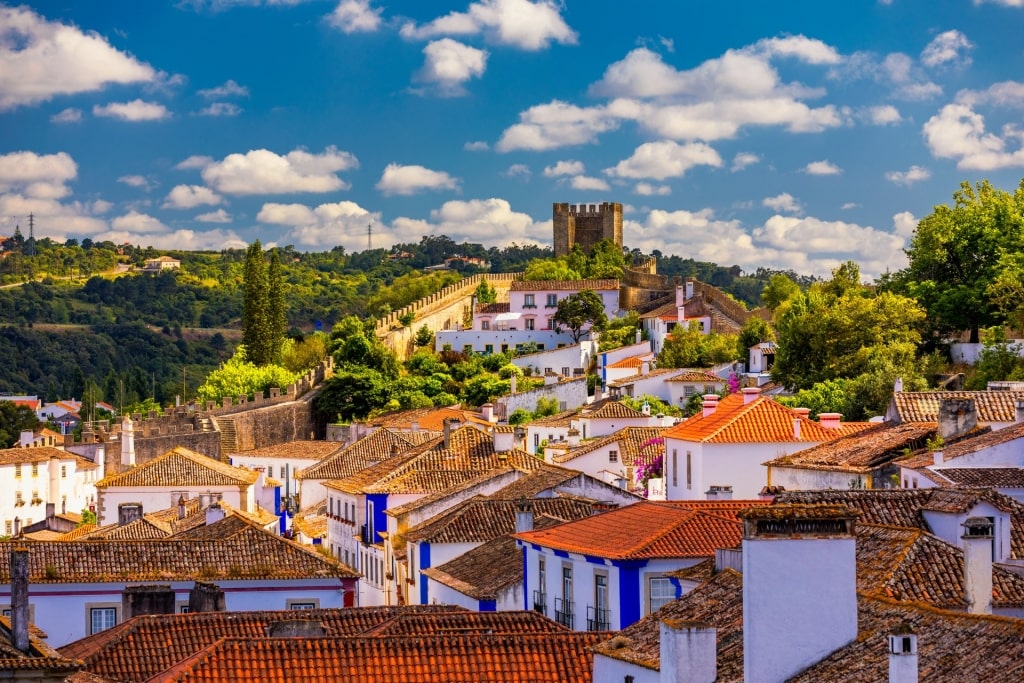
Obidos, Portugal
Walled Obidos, perched on a hilltop just over an hour’s drive from Lisbon, was founded in 308 BC. What you see today is mainly the medieval section, carefully preserved and encircled by crenelated ramparts that snake over the hillside, topped by a tall, imposing castle.
Clustered inside the walls is a jumble of whitewashed houses and old churches with warm, terracotta roof tiles, some of the buildings adorned with jaunty colors of blue and yellow.
One of the most beautiful places in Portugal, Obidos is a place to lose yourself; to wander the streets, peeking into the Igreja de Santa Maria church to admire the beautiful 17th-century azulejos tiles.
Climb up the stairs at Porta da Vila or the 13th-century castle, which is now a luxury hotel, and stroll the mile-long circumference of the walls, built by the Moors between the seventh and 11th centuries.
Read: Three Days in Lisbon
Tallinn, Estonia
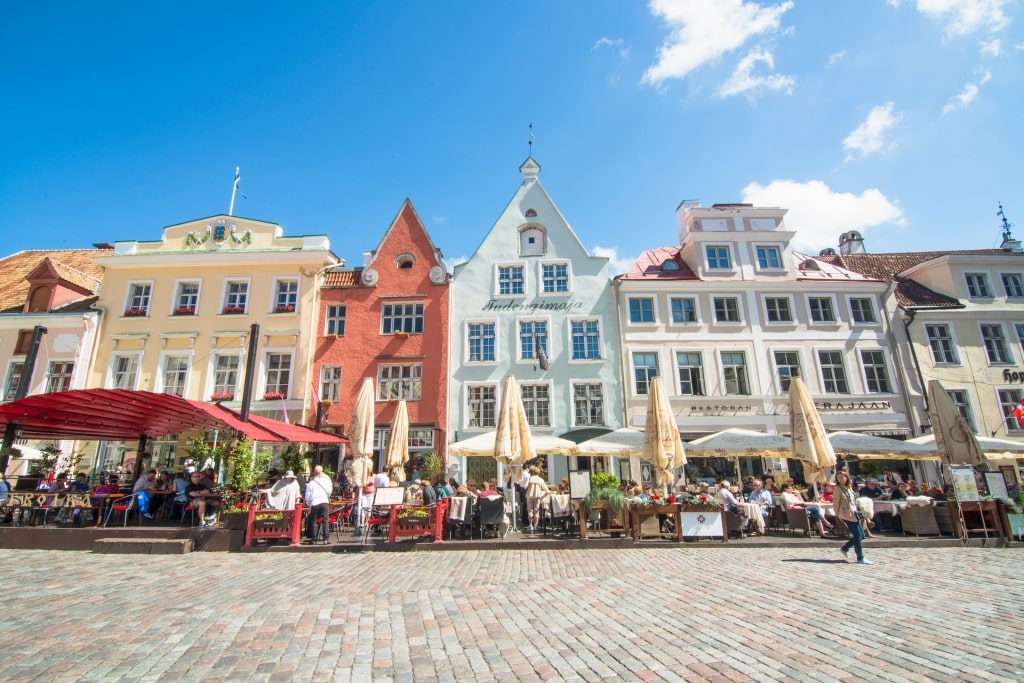
Tallinn, Estonia
Wandering through the medieval heart of Estonia’s compact capital is akin to stepping into a fairy tale. Tallinn is one of the most immaculately preserved medieval cities in Europe, with its winding, cobbled lanes, crooked, half-timbered houses, and ancient squares. The whole of the center is protected by UNESCO as a World Heritage Site.
Wander around the ramparts from Hellemann Tower and gaze down over the rooftops for perspective. Back in the center, Raekoja Plats, or Town Hall Square in Tallinn’s Old Town, is overlooked by the magnificent Gothic Town Hall, which now contains a medieval museum, giving you an insight into life some 700 years ago.
Nearby, the Town Hall Pharmacy, dating back to 1422, is another step back in time. Dusty wooden shelves are lined with flasks of potions, while a cabinet displays alarming-looking medical instruments from the Middle Ages.
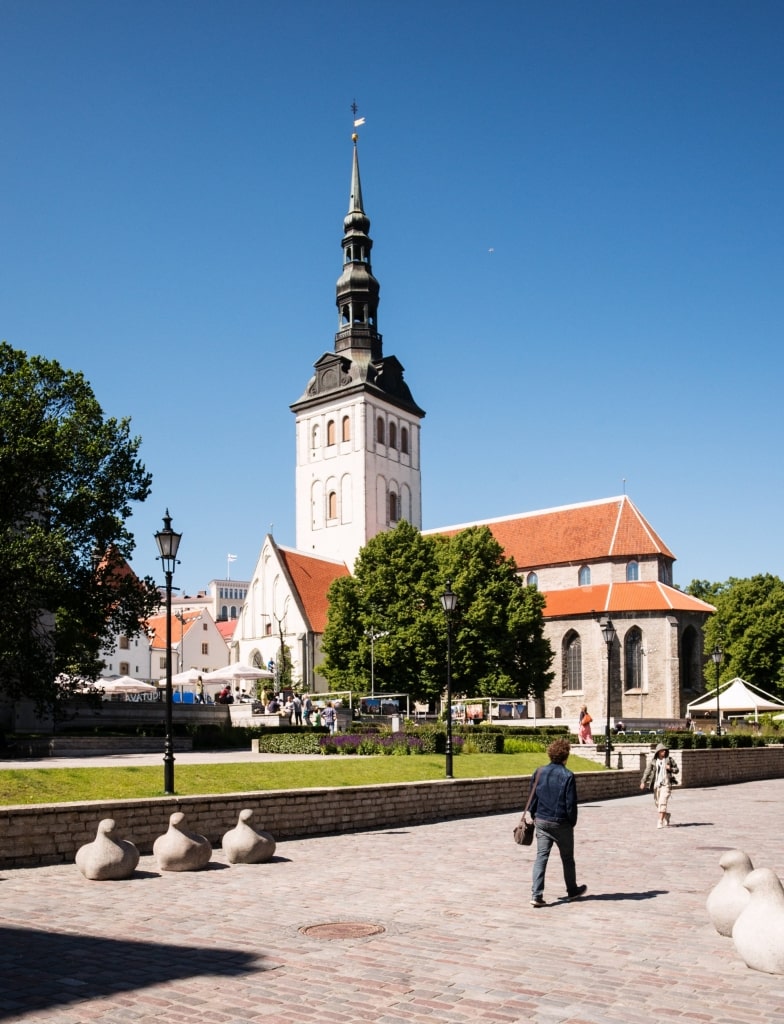
St. Nicholas Church in Tallinn, Estonia
If visiting a church is on your list of things to do in Tallinn, make it St. Nicholas. The building dates to the 13th century, although large sections have been reconstructed following damage in World War II. Today, the church is a concert hall and art museum; its paintings survived the war as they were removed before the bombs fell.
The star attraction is Danse Macabre, a vast tableau nearly 100 feet wide when it was created in the 15th century by Bernt Notke. Only a fragment remains today, but it’s a thrilling and evocative depiction of the “Dance of Death”.
Dubrovnik, Croatia
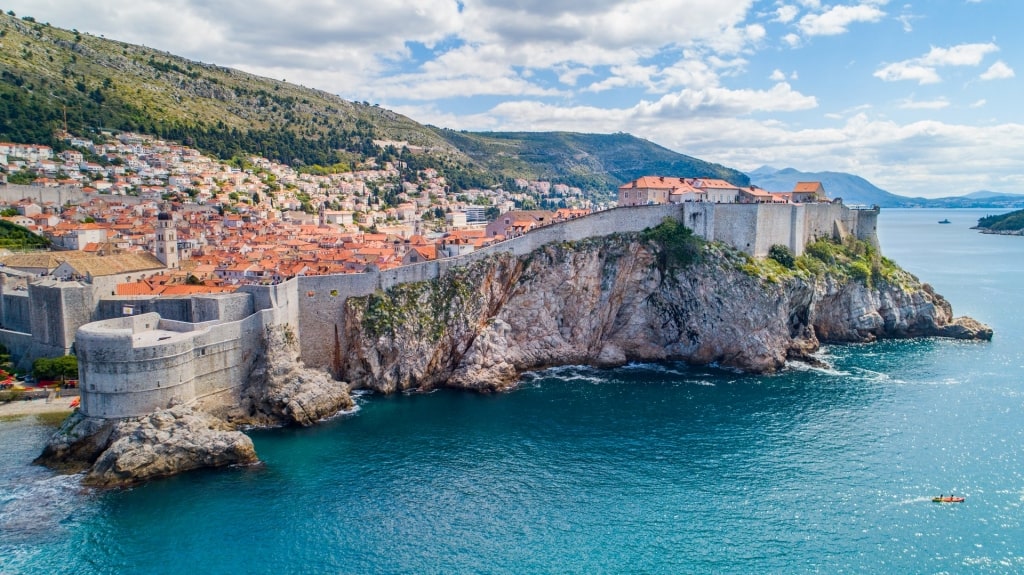
Dubrovnik, Croatia
The beauty of Dubrovnik is pristine, although this hasn’t always been the case; the ancient city was badly damaged in the Balkans conflict of the early 1990s. Many of the terracotta roofs you see today have been carefully repaired.
Solid ramparts encircle a jumble of baroque palaces, gleaming limestone streets, and bell towers, the sparkling Adriatic on three sides. If you only do thing from your list of things to do in Dubrovnik, make it the stroll along the medieval walls, studded with towers and bastions and offering wonderful views down over the rooftops.
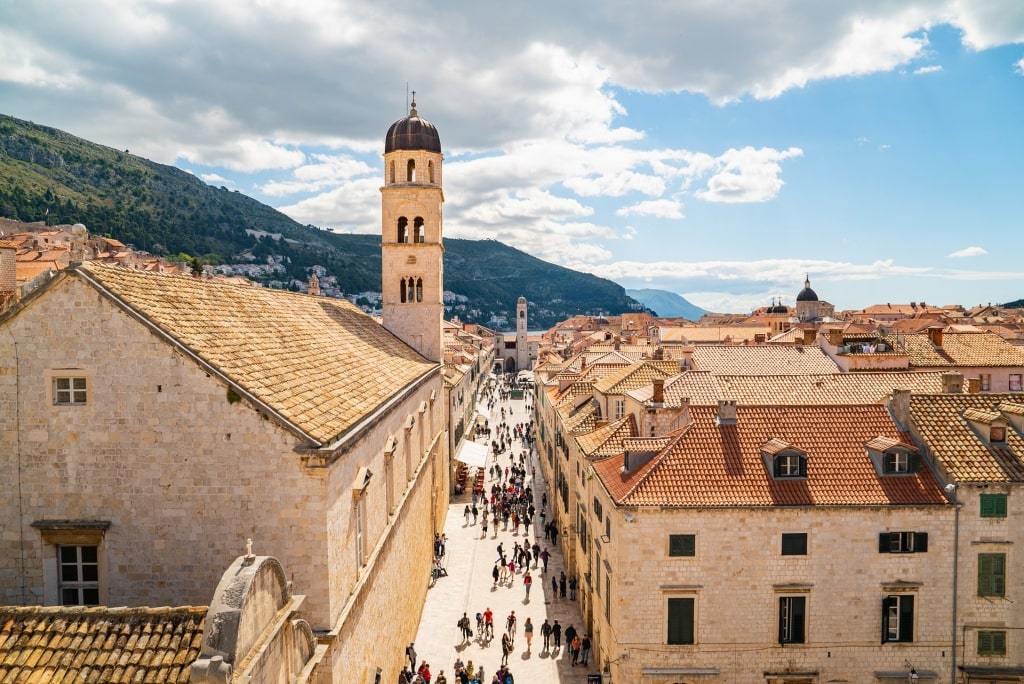
Stradun in Dubrovnik, Croatia
On Stradun, the elegant main boulevard, visit the Franciscan Monastery. The 14th-century cloister surrounds a serene courtyard shaded by orange trees. Inside, old paintings depict Dubrovnik before a catastrophic earthquake felled the Mediterranean city in 1667.
The 14th-century pharmacy sells enticing lotions and potions concocted from ancient formulae. The recipes may be ancient, but the fresh, fruity scents are delicious and the cosmetics make a great gift.
Istanbul, Turkey
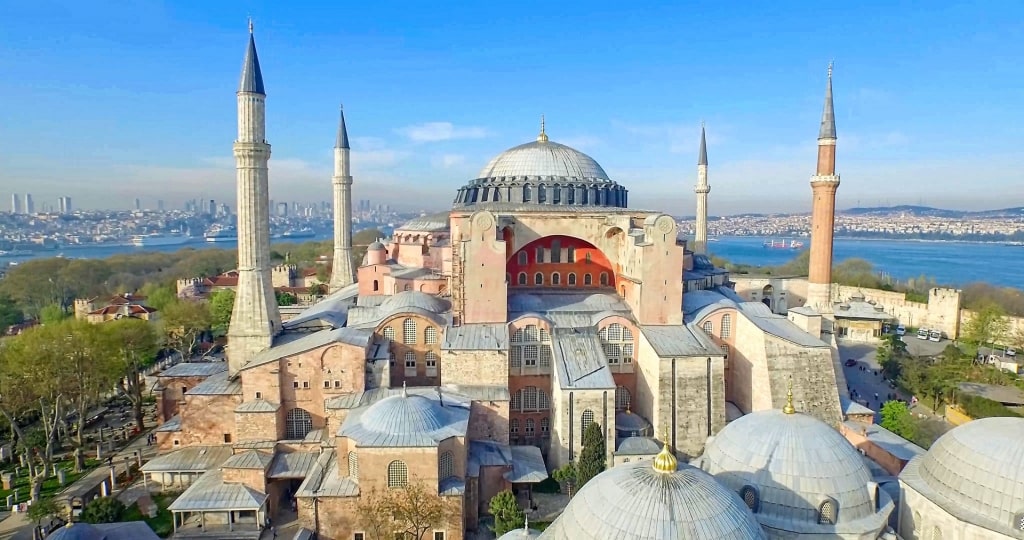
Hagia Sophia in Istanbul, Turkey
Istanbul, formerly Constantinople, was the capital of the Ottoman Empire from 1453, following more than a millennium as the seat of the Byzantine Empire. Needless to say, the mosques, minarets, ramparts, and palaces you see today span thousands of years and bear the marks of different civilizations and faiths.
Many of the city’s most iconic landmarks date to the medieval period. In the Sultanahmet neighborhood, the opulent Hagia Sophia, built as a Greek Orthodox church in the 6th century, was converted to a mosque when the Ottomans arrived in 1453. Nowadays, it’s a museum, the original mosaics in shimmering gold lining the domes and walls.
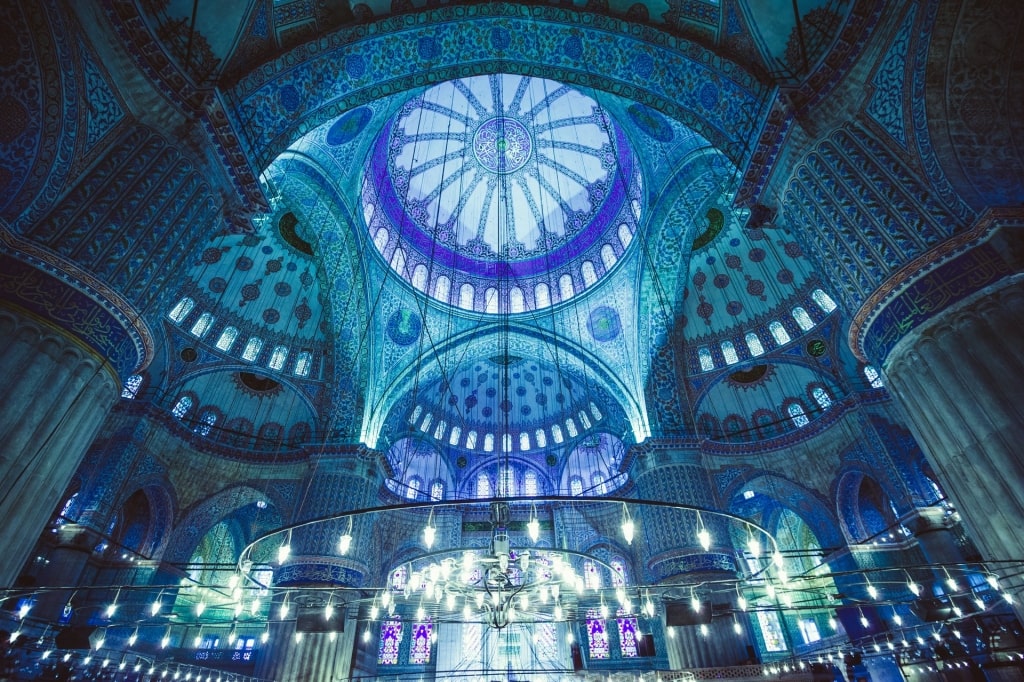
The Blue Mosque in Istanbul, Turkey
The graceful Blue Mosque, its piercing minarets a symbol of the city, was built in 1616, towards the end of the medieval era. Also nearby, the intricate Topkapi Palace dates to the 15th century and was home to the sultans for some 500 years.
Today, you’ll see leafy courtyards, elegant fountains, opulently tiled salons, and priceless porcelain. Don’t miss the Treasury for the lavishly jeweled swords, daggers, and a throne inlaid with mother-of-pearl.
The Romanesque Galata Tower, crowning one of Istanbul’s many hills, was the tallest building in the city when it was constructed in 1348. You can still climb to the top today for views down over the Bosphorus and across the Golden Horn to Sultanahmet.
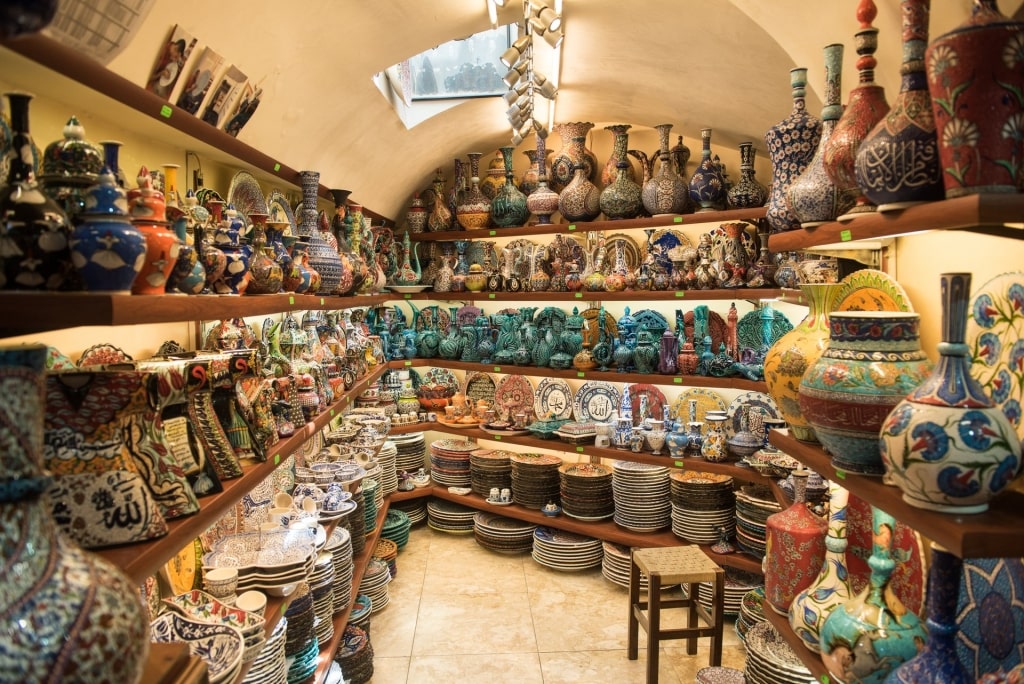
The Grand Bazaar in Istanbul, Turkey
Finally, no trip to Istanbul is complete without shopping for Turkish souvenirs at the Grand Bazaar, which was built in 1461. The style of some of the crafts on sale in this labyrinth, and the tradition of friendly haggling, remains unchanged since then.
Rhodes, Greece

Rhodes, Greece
Criss-crossed by different civilisations for millennia, the Greek island of Rhodes, just off the coast of Turkey, has layer upon layer of historic interest. But the Middle Ages was perhaps one of the most important periods here, thanks to the Knights of St. John, who built a base here during their crusades.
From 1309, the wealthy Knights ruled the island. They fortified the chunky stone city walls, still intact today, and guarded the 11 massive gates. Keen historians might want to trace the old walls, admiring the different gates, each of which has a story to tell.
Inside the walls, the Knights constructed majestic, fortified palaces, or inns. These are still standing and form a formidable façade along Ippoton, a wide street of smooth, polished stone in Rhodes’ Old Town. Popularly, it’s known as the Street of the Knights.

Palace of the Grand Master of the Knights in Rhodes, Greece
There are seven inns which accommodated knights according to their place of origin: England, Germany, Italy, Aragon or Auvergne, for example. Look out for the old coats of arms on the buildings.
You’ll also see the crenellated Palace of the Grand Master, home of the leader of the Knights, built in the 14th century but reconstructed 500 years later after an explosion. Inside, there’s a fascinating museum depicting the history of medieval Rhodes.

Rhodes, Greece
What were some of the major cities of medieval Europe?
Many of Europe’s great cities today were already thriving in the Middle Ages. Florence, Milan, Granada in Spain, Seville, Naples, Cologne, and Genoa all had sizable populations. Istanbul, then called Constantinople, was an economic and political powerhouse. Venice was a city-state and later, an empire. Paris was the seat of the kings of France and a center of education and culture.
Europe is peppered with smaller medieval towns, too, from San Gimignano in Tuscany, little more than a village nowadays, albeit a dramatic-looking one, to the almost perfectly preserved Obidos, near Lisbon.

Dubrovnik, Croatia
What were cities like in medieval Europe?
As they are now, cities in medieval Europe were dynamic communities, with rich areas, slums, market squares, churches, universities, and taverns. War and invasions were commonplace, which is why most cities were heavily fortified with walls that have stood the test of time, as you’ll see in Dubrovnik, or Rhodes.
Daily life was governed by the seasons, the harvest, and the religious calendar. Things we take for granted today, like healthcare and education, were not widely available. But what is often seen as an uncivilized, unenlightened time of violence, disease, poor sanitation, and short life expectancy is in many ways untrue.
You only have to look at the exquisite beauty of some of Europe’s medieval buildings, or the dazzling feats of engineering employed to build structures like Dubrovnik’s city walls to realize that the Middle Ages was an extraordinarily productive time.

Dubrovnik, Croatia
Ready to delve deeper into European history? Browse our cruises to Europe and start planning your journey back in time.


